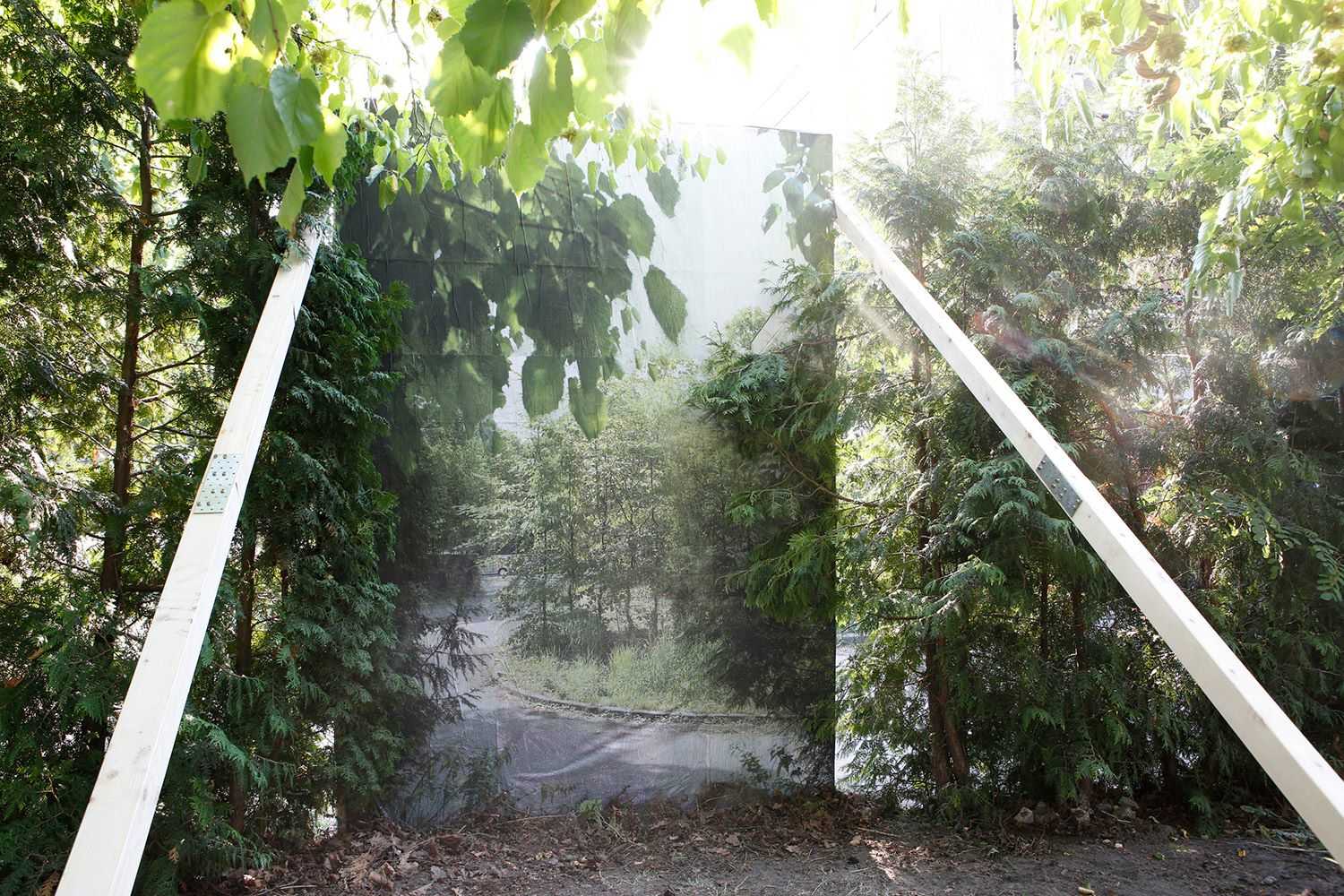EX-EMBASSY, addresses the official and unofficial diplomatic archive of the former Australian embassy to the GDR 1972-86 and is hosted by the project space x-embassy, part of Atelierhaus Australische Botschaft Ost. With DAI's How To Do ThingsTheory-seminar leader Rachel O'Reilly as Curatorial Advisor and with contributions by numerous artists and researchers. Till August 31.
Introduction
In August 2018, the on-site exhibition and text series EX-EMBASSY unpacks a persistent archive of cultural and diplomatic legacies arising from, alongside and beyond the ‘productive relations’ between the German Democratic Republic (GDR) and the ‘fifth continent’. Following geographer Doreen Massey’s definition of space as “the simultaneity of stories thus far”, EX-EMBASSY addresses the former Australian embassy to the GDR as a site shaped by, and containing, trajectories that move far beyond its physical frame, including multiple trajectories criss-crossing both Cold War and nascent neoliberal ideological tensions. The commissioned artworks and texts attend to negotiations and contestations of incommensurable regimes of land and property, territory and diplomacy, drawing out the role of the aesthetic within re-alignments of political imagination.
Commissioned artworks and texts probe and challenge an open research archive preliminarily assembled and shared by the project’s instigator and host, Sonja Hornung (AU/DE). Artists: Megan Cope (Quandamooka), Archie Moore (Kamilaroi), Sumugan Sivanesan (AU/DE) & Carl Gerber (DE), Sonya Schönberger (DE) and Khadija von Zinnenburg Carroll (AU/AT). Writers: Ben Gook (AU/DE), Sarah Keenan (AU/UK), Peter Monteath (AU), Rachel O’Reilly (AU/DE), and Nathan Sentance (Wiradjuri). Curatorial Advisor: Rachel O’Reilly (AU/DE).
The embassy built by the former German Democratic Republic (GDR) for Australia was designed by a group led by the architect of East Berlin’s iconic Cafe Moskau, Horst Bauer. As a material and symbolic site, the embassy’s construction in Berlin’s north east captures a particular moment of geopolitical and aesthetic reorganisation. In Australia, Labor Party Prime Minister Gough Whitlam had come to power in 1972 on the back of progressive and radical social movements, including the Aboriginal-led struggle for land rights. The country was one of the first Western states to recognise communist China, while in the same period increasing military aid four-fold to Suharto’s anti-communist dictatorship in Indonesia. In the immediate wake of the 1972 Basic Treaty (Grundlagenvertrag), which facilitated recognition between East and West Germany, the diplomatic relations established between the socialist GDR and the settler colony of Australia were among the first to be negotiated by the GDR with a Western capitalist state.
To accommodate the swathe of new diplomatic missions opening to the GDR in the 1970s, a small number of prefabricated, standard-issue models of socialist-modernist design were allocated to around 140 new embassies. Australia was granted East Berlin’s largest model, the ‘IHB-III’ (Ingenieur-Hochbau-III). Located close by, its architectural ‘twin’, the Iraqi embassy, has been abandoned since 1990. The long, low-lying three-storey buildings are both constructed from concrete slabs featuring individualised ceramic brick shades and mosaic elements by Hedwig Bollhagen, a generous garden, and, singularly in Australia’s case, a tennis court. Like other capitalist nation-states, Australia was granted a 99-year rental contract and charged by the GDR for its use.
Pre-recognition, Australia had sought contact as early as 1951 with GDR representatives via the Australian Military Mission near the 1936 Olympic Stadium in West Berlin, while the GDR in Sydney occupied a small, private shopfront ironically listed as ‘KfA Pty Ltd’ (Chamber for Foreign Trade Pty Ltd). Australia’s trade aims included profiting from the export of coal, wool and wheat. The countries shared an interest in comparing knowledge on the extractive art of processing lignite (brown coal). The GDR aimed to export bulk commodities, such as lenses and glassware from the renowned firm Carl Zeiss (1) .
Beyond trade pragmatism, other desires and counter-projects can be traced running through the embassy’s built frames that draw attention to more complex material histories of diplomatic organisation. Faith Bandler and Ray Peckham travelled to the GDR in 1951 under surveillance by the recently formed Australian Security Intelligence Organisation (ASIO), performing as part of the World Youth Festival for Peace and giving a speech to factory workers on Aboriginal equality and citizen rights (2) . British anthropologist, land rights advocate and Communist Party member Fred Rose reported on Embassy events for the Stasi (3) , while members of the Aboriginal rock band ‘No Fixed Address’ were effusively received on multiple occasions by East Berliners as proof of the cruelties of colonial capitalism (4) . In the meantime, propagandised links between Aboriginal resistance movements and perceived ‘communist threats’ have been instrumentalised by successive Australian governments to denigrate material justice projects.
Ultimately, Australia’s trade with the GDR bore little fruit. As a result, the Australian Embassy prematurely ended its rental contract on the publicly-owned site well before the fall of the wall, in 1986. The monolith of a building left behind bears witness to the actual vulnerability of infrastructures representing ostensibly stable states, governance ideals, and private interests. Privatised in the 1990s as part of the ‘Treuhand’ process (5) – which oversaw the selling-off of East German state assets for licentiously low prices – the building subsequently changed hands a number of times, narrowly escaping demolition in 2014. Albeit now heritage-listed, today it lies in a state of weedy disrepair; a long-delayed redevelopment into a luxury apartment complex remains unapproved. Artist studios presently occupy the no-longer-state infrastructure at the wavering edge of Berlin’s real estate bloom.
EX-EMBASSY opens as part of Berlin’s Project Space Festival 2018 and is hosted by the project space x-embassy, part of Atelierhaus Australische Botschaft Ost. This project has been assisted by the Australian Government through the Australia Council for the Arts, its arts funding and advisory body, and by the Rosa Luxemburg Foundation through the association Helle Panke e.V.. With thanks to our media partner Berlin Art Link.

